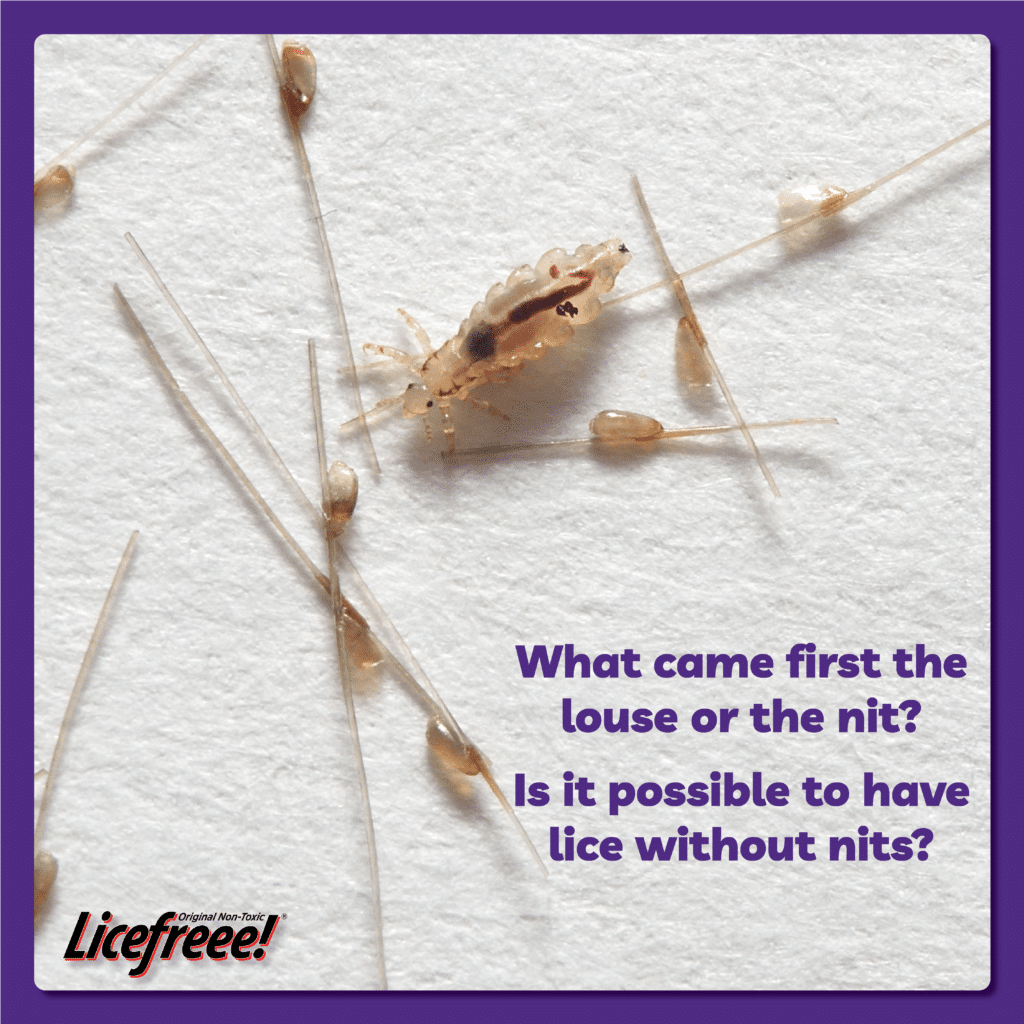
Imagine this: you know there’s a lice infestation working its way around your child’s school, so you inspect your child’s head, only to find a few rogue lice but no trace of their eggs.
Understanding the relationship between live lice and nits is crucial in confirming a case of head lice. If you do find yourself in this situation, there are several steps you can take to prevent a full-blown lice infestation.
The Connection Between Live Lice & Nits
You may find tiny white or yellow specks on your child’s head, close to the scalp, and firmly attached to individual hair strands — these are nits or lice eggs. Unlike dandruff, these specks do not move when you touch them and are not easily removed. Nits usually take around a week to hatch, and once they hatch, the empty egg casings remain attached to the hair. It’s important to note that after treatment, dead nits may still stay in the hair and must be removed with a special nit comb. Skipping this step can lead to misleading diagnoses in the future.
The Presence of Live Lice
While finding nits strongly indicates a lice infestation, live lice is the definitive factor. Live lice can move quickly and are often seen crawling on the scalp or hair strands. It’s important to note that live lice can exist without nits, as they may have recently hatched or been removed by natural factors or previous treatments.
Addressing Lice Infestations
If you have discovered live lice in your hair without any nits, it’s essential to immediately address the infestation. Here are some steps you can take:
1. Use Lice Free Shampoo
Licefreee Everyday Shampoo is designed to stop the spread of lice. Simply use Licefreee Everyday Shampoo as a replacement for regular shampoo for up to two weeks following a lice treatment to prevent a re-infestation.
2. Comb Out Live Lice
Use a fine-toothed comb specifically designed for lice removal, like the Licefreee NitDuo Comb, to comb through your hair carefully. This will help remove any live lice that may be present. Comb the hair section by section, paying close attention to the scalp, behind the ears, and the nape of the neck.
3. Check for Nits
Even if you did not find nits initially, it’s crucial to continue regular checks for the presence of nits or newly hatched lice. Comb through the hair with a nit comb to help identify and remove any nits that may have been missed.
4. Treat Personal Items
Wash or dry-clean clothing, bedding, and any personal items that may have come into contact with lice. Vacuum upholstered furniture and car seats to remove any potential lice or nits. For items that cannot be machine-washed, use Licefreee Home to kill lice on furniture and upholstery.
While it is possible to find live lice without nits, the presence of live lice confirms a head lice infestation. Prompt action, such as using Licefreee Everyday Shampoo, combing out live lice, and maintaining regular checks for nits, is necessary to address the infestation effectively. By taking these steps, you can eliminate lice and prevent further spread and discomfort.
